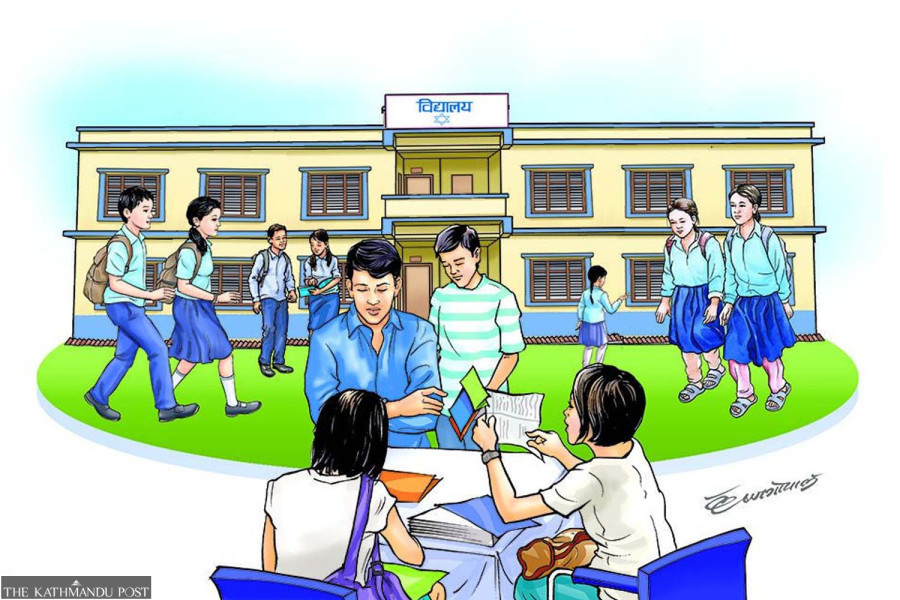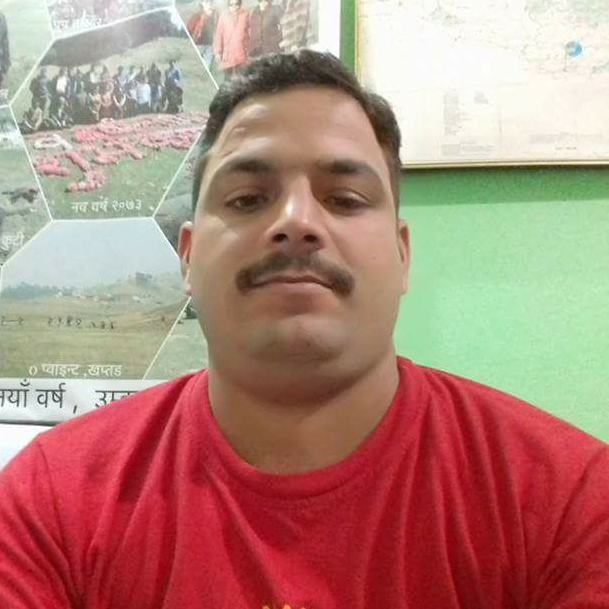Sudurpaschim Province
Community schools in Kanchanpur undergo mergers, downgrades amid falling enrolment
Officials say the move aims to ensure student retention and teacher positions in community schools that are struggling with resources.
Bhawani Bhatta
The Shantipur Basic School in ward 7 of Shuklaphanta Municipality has merged with the Dharma Janata Secondary School in the same ward this year due to a shortage of students. The Shantipur Basic School, which ran classes up to grade 5, had been operating with just three teachers and 15 to 20 students for several years. Only 20 students had been enrolled at Shantipur Basic School in the last academic year.
The condition of Milan Basic School in ward 12 of Shuklaphanta was even worse than that of Shantipur Basic School. In the last academic session, there were only one teacher and 14 students. Due to the low numbers, there was only one post of teacher, who was appointed under the relief quota. Relief quota teachers are those employed on a contractual basis by local units to fill the shortage of teachers. Milan Secondary School also merged with Shivashakti Secondary School for the same reason.
According to the Shuklaphanta Municipality, four community schools with low numbers of students have been merged with other schools in the current academic session. Two other schools have been downgraded. All six had fewer than 30 students each.
“This situation arose due to the falling number of students every year, and the merger and downgrade are the only ways to keep the enrolled students at school and maintain the teachers’ posts who teach there,” said Dipendra Joshi, technical assistant of the municipality. “This step was taken because the number of students was very low and there was no possibility of boosting enrolment. The merger and downgrading plan was introduced after a detailed study and analysis,” Joshi added.
The municipality also merged Trimurti Basic School located in Ward 10 with Krishna Secondary School located in the same ward, and Saraswati Basic School in ward 12 with Siddhartha Basic School in the same ward. Similarly, Bhawani Basic School and Janachetana Secondary School, which were teaching classes up to grade five, have been downgraded to teaching only up to grade three.
The Teacher Position Matching and Management Procedure 2020 has given the responsibility of the merging community schools and adjusting teachers to local units.
Not only Shuklaphanta Municipality, but several other local units are also merging and downgrading schools with low student numbers.
According to Padmaraj Bhatta, the chief administrative officer of Bedkot Municipality in the district, the municipal authorities are planning to downgrade two schools with low enrolment.
“After a detailed study of a secondary school and a basic school, we are planning to downgrade them. Our officials have submitted a report suggesting a downgrade because there is no possibility of the student numbers increasing at those schools,” said Bhatta.
“Due to the dwindling number of students and poor management of teachers’ posts, the enrolled students were unable to receive a good education, so downgrading is the only remedy,” Bhatta added.
According to Bhatta, even though the report of the technical team suggests the downgrading, the decision will only be taken after discussing the issue with people’s representatives, members of school management committees and other stakeholders.
Similarly, Beldandi Rural Municipality has also completed technical studies regarding school merger and downgrading of schools with low enrollment.
Bhanubhakta Joshi, head of the education unit of Beldandi Rural Municipality, said that even though the study has been completed, they have yet to decide which schools would be merged.
“The number of students in the basic level is mainly low, and the rural municipal office has made a list for merger and downgrading, but the plan will be put forward after some time once the ongoing new student enrollment programme ends,” said Joshi. “Due to the growing attraction of parents towards private schools, the number of students in public schools at the basic level is decreasing. To protect government schools, the local level, district level authorities, and provincial level authorities have to make new plans and policies to attract students and parents,” he added.
According to Rajendra Bhatta, head of the Education Development and Coordination Unit in Kanchanpur, the number of students in community schools is decreasing every year, and the ratio of teachers and students is also imbalanced in most schools in the district. Similarly, in some schools, there are no teachers, and in some schools, there are more than the required human resources.
“We know schools are being merged and downgraded by local units, but we don’t have exact data on it,” said Bhatta. “In recent times, the local units have started merging and adjusting teachers’ posts, and if all the local units pay attention to this, government school education can be organised and improved. Some public schools are doing various attractive works to improve the education system and attract parents and students, such as teaching all classes in English medium and operating buses for students,” said Bhatta.
“Most private schools offer English-medium education and buses, among other amenities, which appeal to parents. Due to a shortage of qualified teachers and limited budget for community schools in our local unit, we are unable to provide the support public schools truly need,” said Khemraj Bista, chief administrative officer of Shuklaphanta Municipality.




 8.12°C Kathmandu
8.12°C Kathmandu












